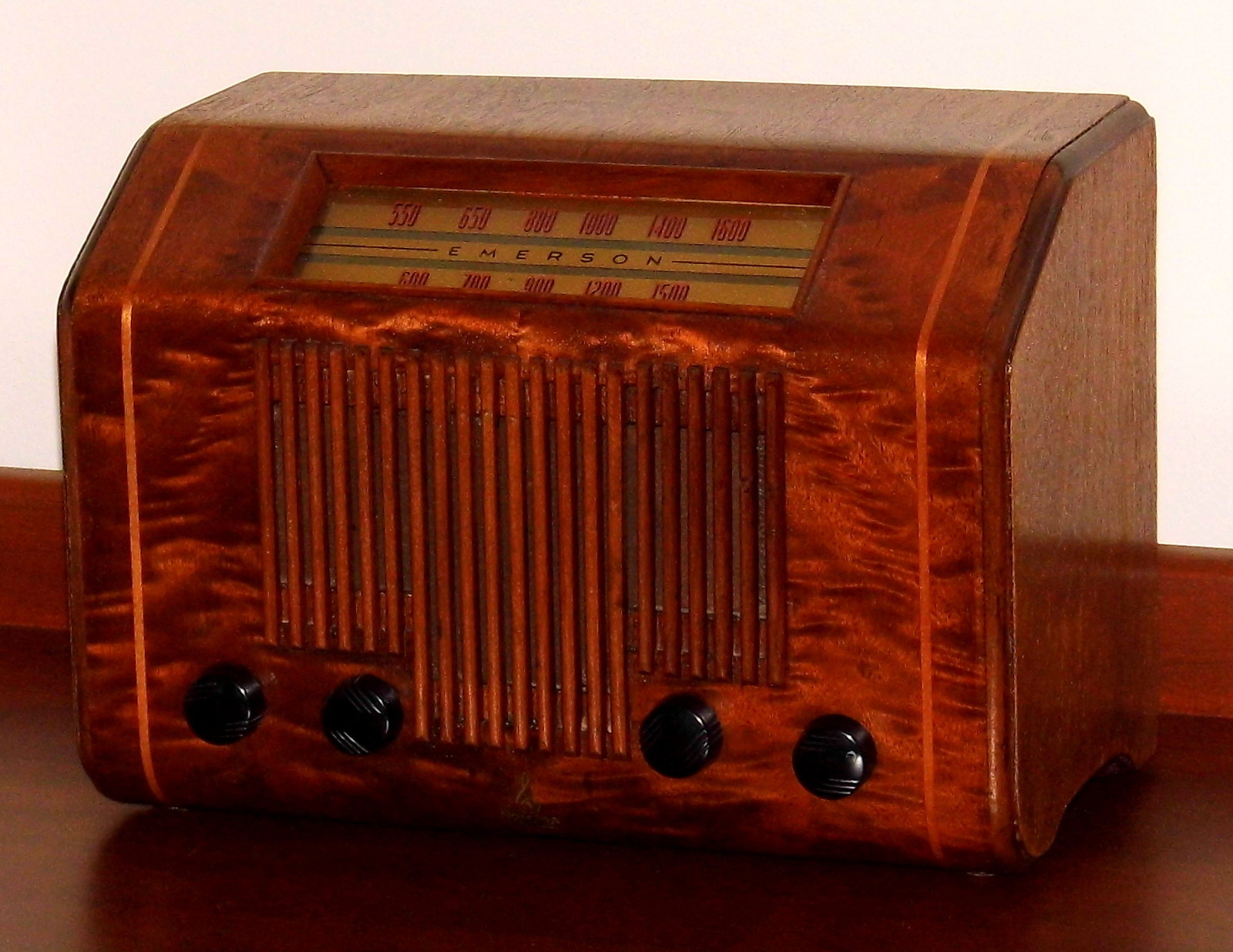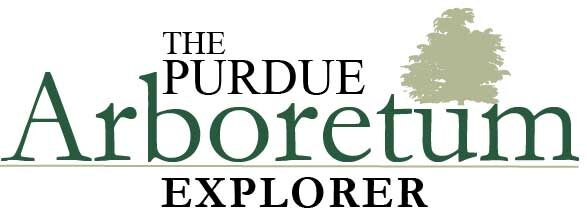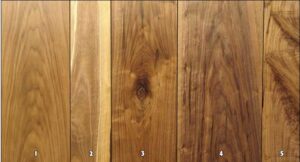Juglans nigra
Summary
Black Walnut, or Juglans nigra l, was once a very abundant species and was used for a variety of products, such as furniture, flooring, gun stocks, barnwood, and custom items. Black Walnut typically has a chocolate brown color for its heartwood, which is very sought after. This material is decay and insect resistant.
Looking at the panels on the wall from left to right, board one is a top grade flat sawn board that is perfect with the “U” or “V” shaped growth rings. Board two shows the chocolate brown characteristics of the heartwood as well as the white from the sapwood. Producers will steam the walnut while green to darken the sapwood, which is shown on the edges of board 4. Board 3 shows a characteristic knot, small pin knots, and a small hole that is caused by bird peck. Board 4 is a clear board that shows the grain, but is not uniform in color. Board 5 is a low grade board that includes the pith, which is evident by the scattered opening on the left. This board also shows a crotched grain pattern.
History
Since it was commonly found, black walnut was used for construction purposes and gunstocks because it had a natural
resistance to decay and insects. It was also used for high end furniture and cabinets. By the 1990’s, the trend towards
lighter colored woods lowered black walnut’s value. Today, black walnut is a very desirable wood that is found in office
furniture, flooring, and specialties.
Color & Texture
Black Walnut has a chocolate brown color that can range from a reddish color to a very dark brown. Since the color is so
desired, black walnut logs will be steamed to darken the sapwood to create a uniform color. Slow growth trees will produce softer boards unlike fast growth trees.
Anatomical and Microscopy
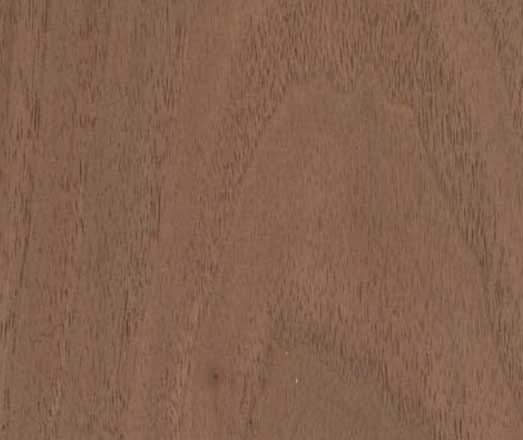
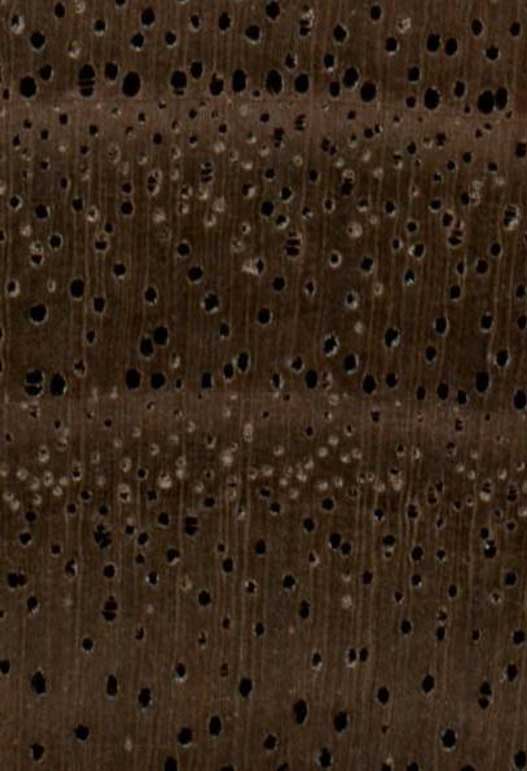
Semi-ring-porous; large earlywood pores grading to medium latewood pores, few; solitary and radial multiples of 2-3; tyloses occasionally to abundantly present; growth rings
distinct; medium rays barely visible without lens, normal spacing; parenchyma diffuse-in-aggregates (sometimes very
faint and barely visible even with lens) and banded (marginal).
Wood Properties
- Workability
- Intermediate in planing but the best for turning and boring.
- Strength
- Relatively strong wood for its weight.
- Steam Bending
- One of the best woods for bending
- Drying
- Relatively easy
- Shrinkage
- Intermediate
- Decay
- Resistant to very resistant to decay
Products
Black walnut is prefered for furniture, flooring, cabinets, and gun stocks. Since it is insect resistant, it is also
used for construction purposes and barn wood.
